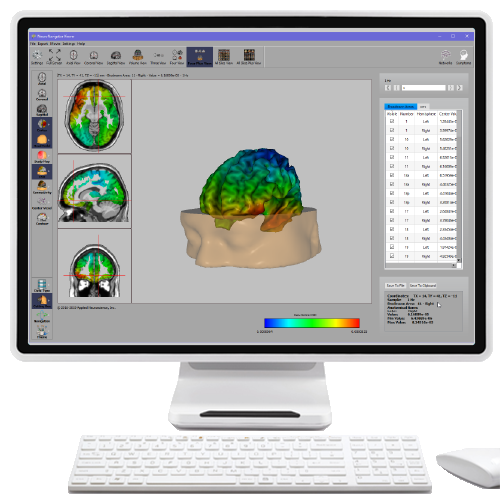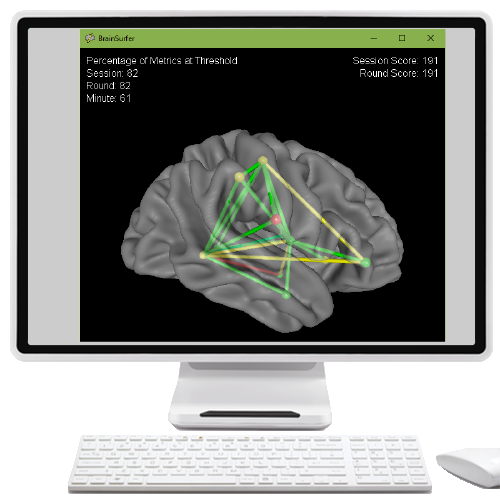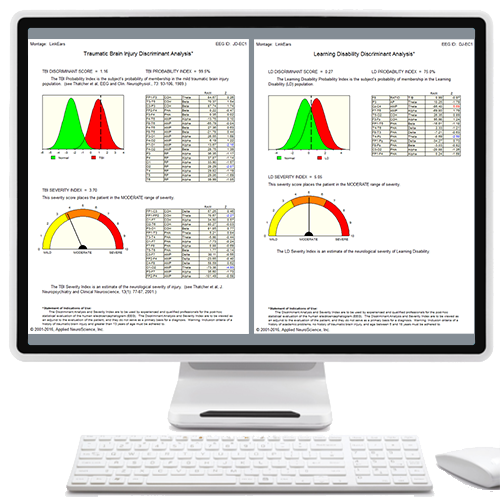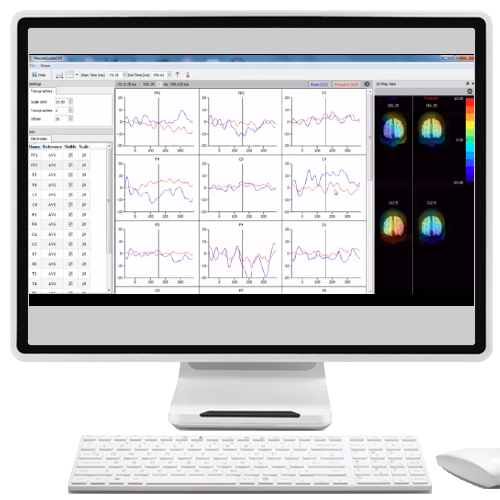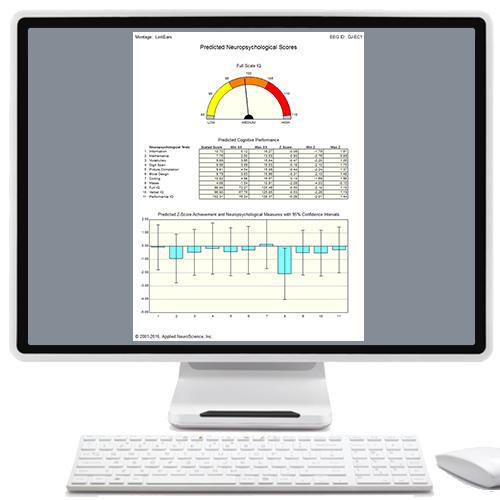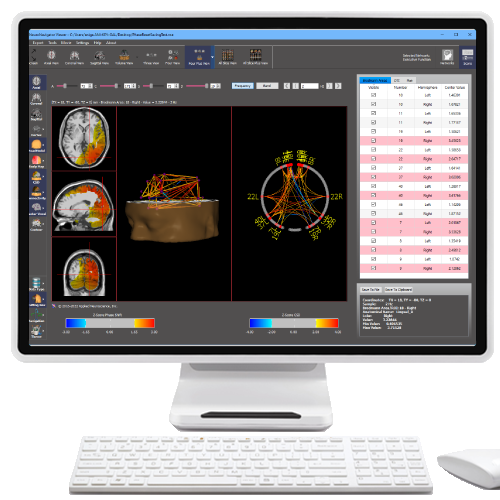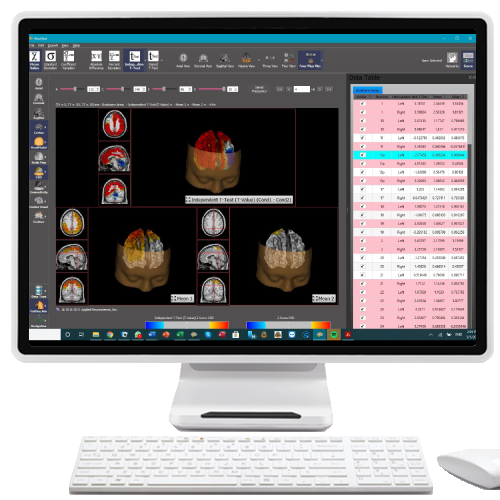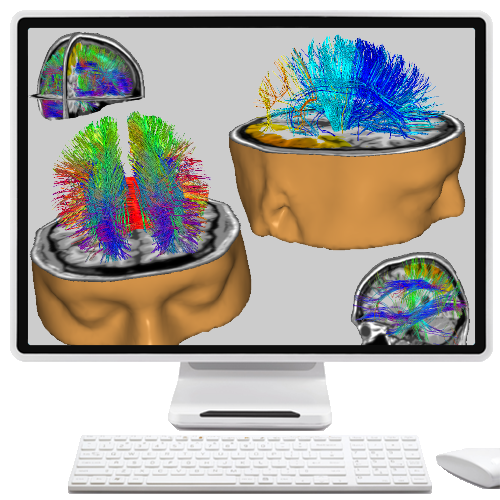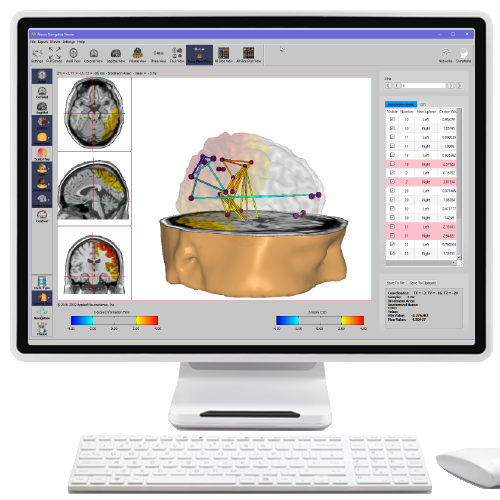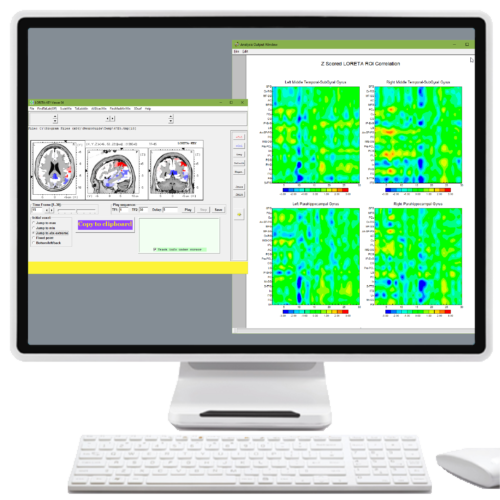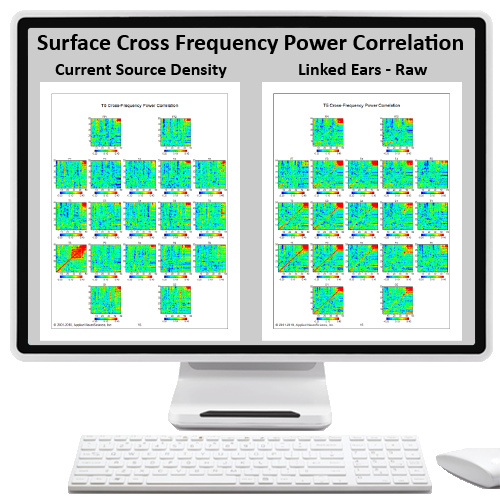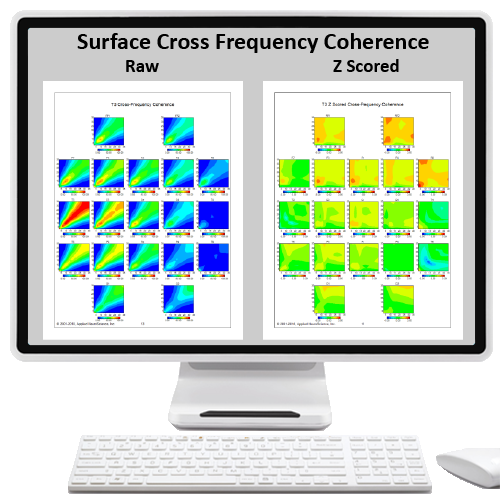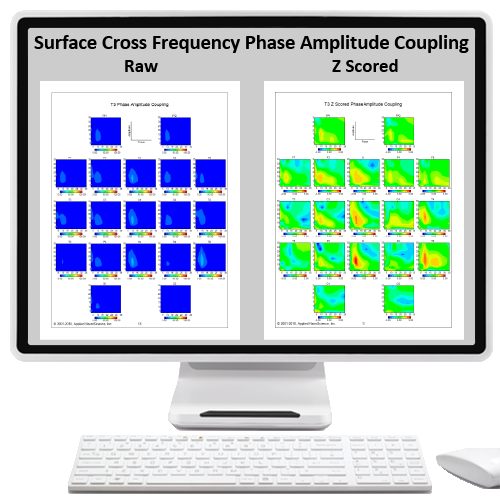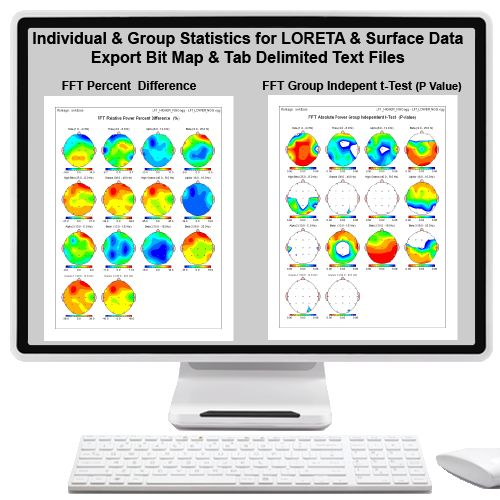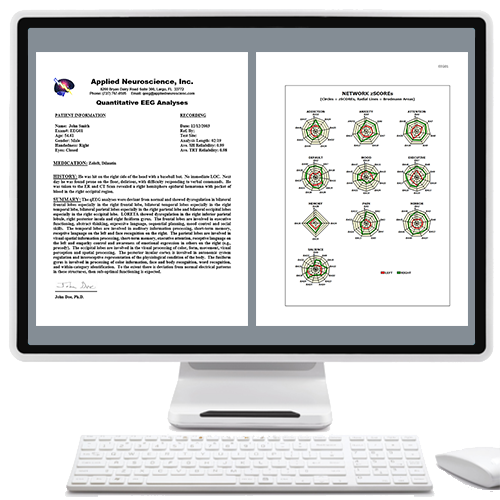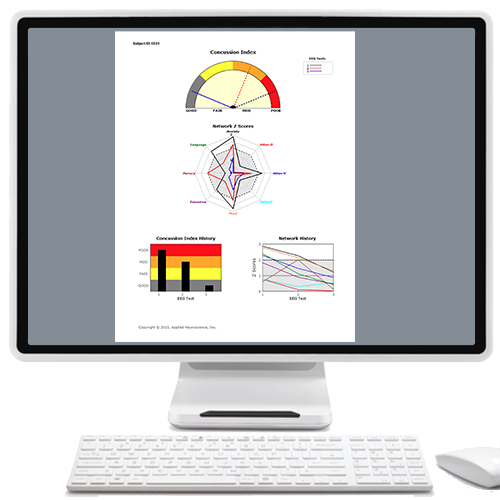Applied Neuroscience Online Store
Our Online Store is designed to help you identify the product(s) that best fit your needs. We encourage prospective users to download and install the NeuroGuide Demo and existing users can go into the NeuroGuide Demo mode (Click Help > Enter Demo Mode) and test out a given product(s). Click Help > NeuroGuide Manuals to gain further in-depth information. Also, we have YouTube Videos and Free Webinars to further educate users and prospective customers. Please do not hesitate to use the “Pure Chat” feature. Our team is available to answer questions or arrange for a Team Viewer session to assist with any issues. It is our goal to empower clinicians and researchers in an efficient and cost effective manner.
From 2005 to December 31, 2014 a permanent 1st license and a renewable 2nd license was issued as a courtesy to single users who needed two computers. However, because of the complexity of renewals and license transfers ANI no longer issues a free renewable 2nd license. As of January 1, 2015, a second renewable license for a 2nd computer based on 1st single-user license/Purchase of NeuroGuide is 1/2 the price of the 1st NeuroGuide License & 1/2 price for add-ons. Single users are limited to a license for two computers one at full price and a 2nd license at 1/2 price. A 3rd license for a 3rd computer requires a purchase of a 1st license at full price. To purchase a 2nd license for a 2nd computer click HERE
NeuroGuide & Recording Modules
NeuroGuide is a “Tool Set” that a Clinician or Researcher can apply to help link symptoms and behavior to functional networks in the brain. One of the tools is EEG Neuroimaging to evaluate Brodmann Areas and nodes and connections of functional networks in the brain likely linked to symptoms, statically or in real-time. NeuroGuide, like a microscope/telescope enhances the clinical application of Conventional and Quantitative Electroencephalography (qEEG) and is an easy to use technology fully instep with the 21st Century.
NeuroNavigator
NeuroNavigator is a new state of the art 3-D Electrical Neuroimaging tool that uses a real-MRI with 12,270 voxels, the Boundary Element Method (to compute the inverse solution and allows for accurate source localization at depths) and swLORETA (adjusts for source space inhomogeneity and provides accurate estimates of source gradients from the upper to lower cortical layers).
LORETA Normative Database (2 month to 82 years) Modules
LORETA stands for Low Resolution Electromagnetic Tomography of the identification and quantification of the 3-dimensional current sources of the surface EEG. In 2000 improved localization was obtained by dividing the source space by the standard deviation of the source space and is called LORETA (or standardized LORETA). Applied Neuroscience, Inc. (ANI) implemented the same mathematics as the Key Institute LORETA but uses the standard deviation of the normative subjects to standardize LORETA (e.g., sLORETA). In 2016, implemented standardized weighted LORETA (swLORETA) using 12,270 voxels with improved localization accuracy which runs inside of the NeuroNavigator program.
Discriminants and Indexes
Discriminant functions are statistical procedures that identify EEG measures that maximally discriminate between different populations and aid in the evaluation of relevant brain regions and frequencies in different groups of subjects. NeuroGuide includes four different discriminant function add-ons: 1- Traumatic Brain Injury (TBI), 2- Learning Disability (LD), 3- The Concussion Index designed to track changes in the brain following a TBI and 4- The Brain Function Index that uses the EEG recorded from Peak-Performers (.g., I.Q. > 120, etc) to evaluate the functioning of different brain networks, e.g., addiction network, attention network, depression network, anxiety network, etc.
The Brain Performance Index (BPI) used discriminant analyses to identify EEG measures that discriminate between low I.Q. vs high I.Q. subjects and then used a linear regression equation to provide an estimate of brain efficiency
Cross Frequency Coupling Modules
New and scientifically powerful measures of EEG Functional Connectivity called (Cross-Frequency Coupling) are available for both Surface EEG and 3-dimensional LORETA. These new tools quantify the degree of coupling between low vs high frequencies of the EEG and then compare the subject’s measure to an age matched normative database.
Statistical Analysis and Batch Processing Modules
NeuroStat is an easy to use statistical program that computes: Analysis of Variance (ANOVA), independent t-tests and paired t-tests in the same individual whose EEG was recorded at different times (e.g., Pre vs Post treatment) and between different groups of subjects. Absolute differences and percent differences are also available. The results of the surface EEG statistics are displayed on color topographic maps as well as tab delimited outputs. LORETA statistics are also an option using the same statistical tests applied to 2,394 current source voxels and displayed using the Key Institute LORETA Viewer. NeuroBatch is used to automatically analyze hundreds of edited EEG data files and compute group statistics. Both programs empower the clinician, researcher and student to create publishable color topographic maps in a few minutes.
Neurofeedback Modules
EEG biofeedback and Neurofeedback are synonymous terms referring to operant learning whereby the brain controls an external device. NeuroGuide’s normative database Z scores aid the clinician to reinforce increased stability and efficiency in brain networks linked to symptoms.
Per Use Products
There are four different per-use products where the user purchases a certain number of uses. The per-use price declines by the number of per-uses purchased at one time. The per-use products are: 1- Automatic Clinical Report Writer (ACR); 2- The Concussion Index to evaluate brain network changes as a function of time or treatment following a concussion or TBI; 3- The Brain Optimization Index that evaluates the changes in network hubs and connections with respect to a population of Peak Performers; and 4-NeuroLink Pro Assessment that provides Radar maps of changes in symptom severity over sessions or treatment.
Subscriptions, Reports, Training
ANI updates about 6 weeks with new products and improvements. Users are entitled to one year of free updates and if they want to continue having access to updates after expiration of the 1st year then there is a $600 fee for a one year update subscription. ANI staff also produce expert clinical reports. Expert training and mentoring using Team Viewer is also available.





